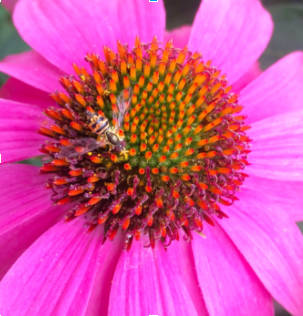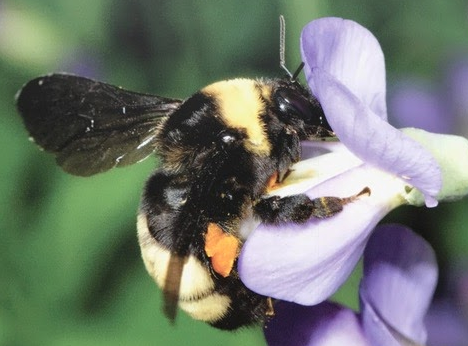On The Endangered List: Bye, Bye Bumble Bees
“It’s a buzzkill.”
As of March 21, 2017, the Rusty Patched Bumble Bee (Bombus Affinis) has been federally listed as an endangered species. Having declined in population by 87% from their original numbers, this bee species is the first bee to be deemed at risk of extinction. They are most common in Illinois and Missouri, and play an important role in the pollination of wildflowers, cranberries, apples, alfalfa hay, and other crops. They pollinate 75% of all crops and 70% of all flowering plants.
Unfortunately, greenhouse bumblebees (bumblebees raised in captivity to pollinate manufactured crops) have transmitted diseases to Rusty Patched Bumblebees. Pesticides and habitat loss also contributed to the decrease in population.
Luckily, there are many ways to save these critters. At home, set up a bee garden by leaving soil untilled and allowing vegetation to remain year round. This will allow the Queen to build her nest over the winter so she can ensure a healthy hive in the spring. Also, limit the use of pesticides and chemical fertilizers that kill insects. Be sure to include native plants in your bee garden, since most pollinators prefer native plants that don’t attract pests or competition. Native plants also provide a stable food source for the queen during the early spring months so she can have a secure hibernation. Native plants include Milkweed, Bee Balm, and Goldenrod. Most bees burrow in holes, so create a bee board by drilling small holes close together in a tree trunk or block of wood to provide shelter for bees during winter months.
Pollinators are extremely important for the survival of plants, so the Rusty Patched Bumble Bees’ demise hardly goes unnoticed.
“That sucks because it ruins a lot of plant production,” senior Karla Toman said.
When thinking about these docile creatures, people often fear their painful sting, but there’s no need. The best way to avoid bee stings is by ignoring them. Quick movements such as swatting will only anger it and cause it to defend itself.
“I’d rather have bumble bees than wasps,” junior Alejandro Chavez said.
“It’s a buzzkill,” senior Cody Matonik said.
Unless things change, Matonik is right. To help track the health and population of this dying species, send pictures of bees that you find to www.beespotter.mste.uiuc.edu/ and be a part of the necessary research to help save the bees. The survival of bees remains in the hands of humanity. The previous information was discovered and first shared courtesy of the St. Louis Zoo.

Julie Lamberty
This bumble bee plays a key role in the pollination of flowering plants.


